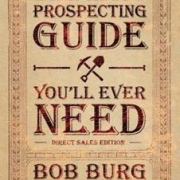Authenticity Blogging
Get personal on social media, is Justin Mack’s advice to financial advisors – to demonstrate that you’re unique, you need to explain what you care about and what it’s like to work with you. “The right mix of personal, educational, and corporate brand content can add great value to an advisor’s social media page.” What resonates strongly with prospects, Mack says, is “personal character, culture, and behind-the-scenes content. “Both current and potential clients want to see the people who power the firm more than the firm’s latest earnings success.”
Authenticity is powerful in blog marketing. “You can talk about your goals, background, mission, and products by simply writing and publishing posts,” Livia Ryan writes on.eonetwork.org. Ryan is talking about personal posts, but at Say It For You, we think her statement very much applies to business blogging: “Readers will be provided an intimate view of your journey and what goes into developing your products and services. Connect with readers, and you create potential customers.”
Real people are the key to authentic relationships, sproutsocial agrees. Consumers want to learn more about the people behind their favorite brands. Surveys show 72% of consumers report feeling sloser to a company when employees share information about a brand online. For that very reason, thehartford.com explains, “Your employees need to understand your company, its values, its goals and its priorities.”
Company employees’ contribution to blogging
At Say It For You, when I’m working with a company to set up a business blogging strategy and I’m training that company’s employees to post blogs, quite often I hit resistance, with employees seeing blogging as just one more task in a series of duties that makes their work load heavier. Still even if my team is going to be composing the posts, it’s crucial for the business owner to enlist the support of the employees.
- Employees are the ones in the field and on the phone with customers and clients.
- Employees know the strengths and best uses of their own company’s products and services.
- Employees are the best people to , in conversation with customers. to elicit testimonials and anecdotes that can be used for blog content.
One combination tactic that quite often turns out to be just right is having professionally ghostwritten posts (to maintain the regularity and research needed to win search engine rankings), but with employees providing their very special touch when time and their regular duties allow.
Blogging for business represents an ideal tool for “getting personal” and earning trust, allowing business owners to express who and “what” they are – What makes them tick? What “ticks them off” about their own industry? In short, business blog writing needs to be real. Being real, though, doesn’t mean being sloppy about grammar and spelling – or about properly attributing quotes and ideas to their sources.
There’s a balancing act between authenticity and brand, but there’s little doubt – authenticity is powerful in blog marketing!






Follow us online!